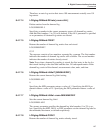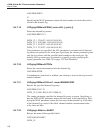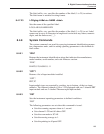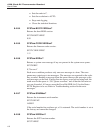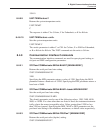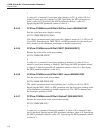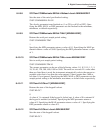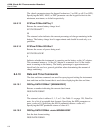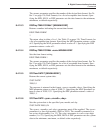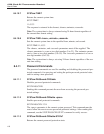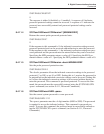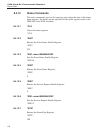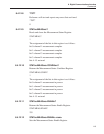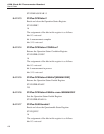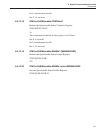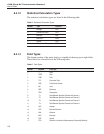
The <num> parameter specifies the number of the desired date format. See Ta
-
ble 11 on page 126, Date Formats, for a list of acceptable time formats. Spec
-
ifying the MIN, MAX, or DEF parameter sets the date format to the minimum,
maximum, or default respectively.
8.4.10.3 DISPlay:TIME:FORMat? [MIN|MAX|DEF]
Returns a number indicating the current time format.
DISP:TIME:FORM?
1
The return value is either a 0 or 1. See Table 12 on page 126, Time Formats, for
a list of acceptable time formats. Specifying the MIN parameter returns a value
of 0. Specifying the MAX parameter returns a value of 1. Specifying the DEF
parameter returns a value of 1.
8.4.10.4 DISPlay:TIME:FORMat <num>|MIN|MAX|DEF
Sets the time format setting.
DISP:TIME:FORM 1
The <num> parameter specifies the number of the desired time format. See Ta-
ble 12 on page 126, Time Formats, for a list of acceptable time formats. Spec-
ifying the MIN, MAX, or DEF parameter sets the time format to the minimum,
maximum, or default respectively.
8.4.10.5 SYSTem:DATE? [MIN|MAX|DEF]
Returns the current system date.
SYST:DATE?
2000,9,1
The response is returned in the format, <year>,<month>,<day>. Specifying the
MIN parameter returns a value of 2000,1,1. Specifying the MAX parameter re
-
turns a value of 2099,12,31. Specifying the DEF parameter returns a value of
2000,1,1.
8.4.10.6 SYSTem:DATE <year>,<month>,<day>
Sets the system date to the specified year, month, and day.
SYST:DATE 2000,8,24
The <year>, <month>, and <day> parameters must all be supplied. The <year>
parameter is a four-digit number (2000 to 2099). The <month> parameter is a
one or two-digit number (1 to 12). The <day> parameter is a one or two-digit
number (1 to 31). Specifying the MIN, MAX or DEF parameter sets the system
date to the minimum, maximum, or default value respectively.
115
8 Digital Communications Interface
Commands



